10 Remarkable Exercises to Sing Without Straining
Let’s be real:
Nobody likes vocal strain.
We all know it, we’ve all felt it, and we’ve all wondered how to get rid of it.
Today we’ll go over the basics of vocal strain, why it happens, and look at some of its common sources.
Then we’ll work through ten exercises that will reduce strain in your voice and show you how to sing better!
By the way if you want to watch a great video that takes you through all these exercises, check out my video below:
What Is Vocal Strain?

The human voice is pretty great (see Exhibit A above), but it has its limits.
Vocal strain happens when you push your voice to do things it’s not used to doing.
When you try to hit really high or low notes that you don’t reach very often, you probably feel some tension in your vocal cords.
To listeners, your voice may sound rough, raspy, or shrill.
What’s going on?
Remember, the vocal cords are muscles.
Like any other muscles, they undergo strain when pushed too far.
Here’s a quick preview of the 10 exercises we’ll be discussing today:
My Definition
Here’s another way to think about vocal strain that I’ve found helpful.
Vocal strain occurs when muscles outside the intrinsic vocal folds or “true vocal cords” get involved in your singing.
Now, what do I mean by that?
If you’re going for a super high or low note, your vocal cords alone might not be able to cut it.
If that happens, other muscles in and around your larynx will jump to the rescue!
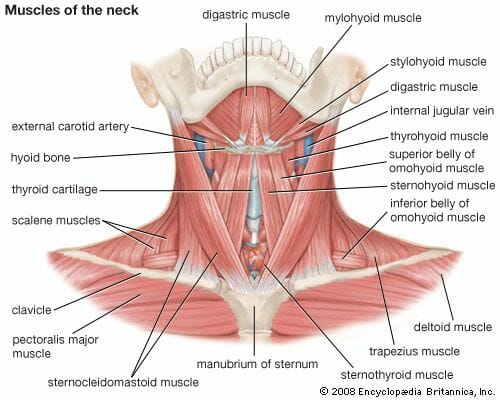
Your muscles will push and squeeze your vocal cords together to make the sound you want.
They want you to hit that note and are doing everything they can to help!
The only problem is that these other muscles weren’t designed for singing, so the result will not be a very high-quality sound.
Think of a group project where one person slacks off. To avoid getting a bad grade, everyone else in the group will jump in to finish their work.
But those other people may not be as good at doing the job as the original person.

Your voice works in the same way.
Your vocal cords are designed to help you sing across your entire range. But sometimes, when you try to push too far outside your comfort zone, extrinsic muscles get involved to help.
And the result is strain!
Getting rid of vocal strain is a matter of relaxing your whole body and letting your vocal cords work the way they should.
Today we’ll look at how to hit high notes naturally with your vocal cords while reducing interference from other parts of your body.
Many singers wonder how to sing high without straining or how to not strain your voice when singing high notes. It’s all about proper technique rather than forcing your voice.
Common Sources of Tension

Your Tongue

Often, singers will try to reach for notes with their tongue.
They might stick their tongue towards their lips to hit a high note or pull it back into their throat for a low note.
Either way, they’re adding tension to their voice.
That’s because the larynx or voice box tends to follow the direction of the tongue. And if the tongue is too far forward, the larynx will also rise.
We’ll discuss the larynx in one minute, but for right now, just understand that you don’t want to sing with a high larynx because it makes you sound squeezy or nasal.
To check for tongue tension:
1. Place your thumb just under your chin and swallow.
2. You’ll feel a little muscle pushing down. That’s the muscle that controls the root of your tongue. It’s called the digastric muscle.

3. Next, try to sing while holding your thumb underneath your chin.
4. Try to sing without feeling any motion underneath your chin.
This means that your tongue is not getting involved and not adding any strain to your voice.
***By the way, exercises 4 and 5 below are great for reducing tongue tension.
Your Larynx
A lot of vocal strain comes from your larynx, also known as your voice box.
For example, someone might strain their neck because they’re trying to push their larynx up to hit a high note.
When they do, their voice sounds thin and shrill.
This is particularly challenging for female vocalists, which is why techniques for how to sing without straining female voices often focus on larynx position and relaxation.
You can actually see the strap muscles (infrahyoid muscles, to use the fancy scientific term) in their necks get tense and pop out.

Other people might push their larynx down trying to hit low notes.
The result sounds kind of dull, lifeless, and loses a lot of tone.
This is a common issue when learning how to sing in chest voice without straining, as many vocalists push their larynx down too far trying to maintain that rich chest resonance.
But it is much more common for beginning singers to raise their larynx as they sing higher.
To see how to relax your larynx:
1. Gently take your thumb and first finger and feel your voice box between them.
2. Swallow, and as you swallow, feel the direction where your voice box moves. You’ll probably feel your voice box moves upwards.

3. Next, pretend to yawn. As you yawn, feel the direction your voice box moves. You’ll probably feel your voice box move downward.
4. Finally, sing a high note and if you feel your larynx rising, try to add a bit of a “yawny” or “goofy” sound to the tone.
You should feel that the larynx relaxes!
Many vocalists search for how to sing in head voice without straining, and this yawn technique is perfect for accessing those higher notes without tension.
Your Upper Body

Other common causes of vocal strain lie in your chest and shoulders. They are:
- Slouching or leaning back
- Carrying your shoulders too high or too low
- Holding your chest too far forward or too far back
- Clenching your abdominal muscles
There are a few others, but these are the big ones.
Again, in all these cases, you are adding strain to your voice because these muscles are getting in the way of your vocal cords.
So what’s the solution?
In the next section, I’m going to show you 10 fantastic exercises to sing without strain.
Let’s get started…
Ten Terrific Exercises
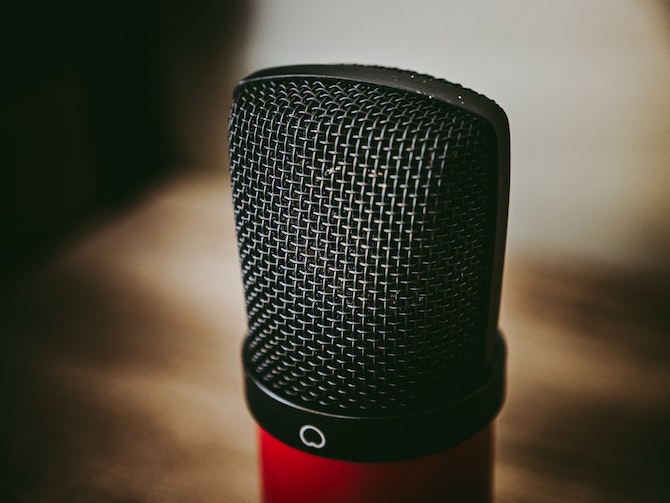
As you can see, good singing techniques involve much more than just your vocal cords.
Tension anywhere in your body has the potential to strain your voice.
If you’ve ever browsed sing without straining Reddit threads, you’ll notice that experienced singers often emphasize whole-body relaxation as the foundation for tension-free singing.
So, to increase singing power, you have to reduce stress across your entire body.
These exercises will ease tension and help free your vocal cords once and for all!
1. Keep A Tall Posture
Proper posture is essential not only for reducing strain but also for learning how to sing without losing breath, as it creates optimal space for your lungs to expand and support your voice.
Fixing your posture is one of the easiest and quickest ways to reduce vocal strain.
1. Line up your feet, hips, and shoulders.
Space your feet so they are about the same width as your hips.
Imagine two railroad tracks from your feet to your shoulders and fit your entire body (besides your arms) inside the tracks.
2. Stand up straight.
Turns out your grandma was onto something.
As annoying as it might have been every time someone told you “stand up straight!” or “don’t slouch!” when you were a kid, these are both excellent pieces of singing advice.
3. Comfortably raise your chest and keep your gaze forward.
Don’t lift your neck back or push your neck forward.
Instead, picture someone about your height standing in front of you and stare them straight in the eyes.
If you’re not sure how to do this exercise, don’t worry. Here’s a great video where I walk you through it:
2. Sing From the Diaphragm
Understanding how to sing from diaphragm properly is perhaps the most fundamental skill in learning how to sing loud without straining, as it gives you the power and support needed for volume without tension.
Breathing the wrong way is another big source of tension.
Your diaphragm is the muscle in between your heart and lungs, located above, and your stomach, kidneys, and so on, located below.
Your diaphragm plays an important role in breathing for singing.
When you inhale, your diaphragm contracts and lets your lungs expand. This pushes air into your lungs.
When you exhale, your diaphragm expands and your lungs contract, pushing air back out of your lungs.
It looks something like this:
So when you’re learning to sing, it’s important to sing from the diaphragm and you’ll breathe and sing so much better!
1. Breathe with your belly.
Let your belly go in and out freely and make sure no other parts of your body are moving too much.
2. Keep your shoulders neutral, don’t raise or lower them.
Raising your shoulders will prevent your lungs from expanding and produce a strained, pinched vocal tone.
3. Inhale, belly out.
4. Exhale, belly in.
That’s it!
Here’s a great video to show you how to breathe for singing:
3. The Lip Trill
Now that we’ve figured out posture and breathing, let’s do some singing!
These next few exercises will use the 1.5-octave scale.
This scale is made of four triplet arpeggios covering an octave and a half of range.
The first two go up, the next two go down.
Want to Nail Those High Notes?
Every singer wants to expand their range. Expand Your Range Fast will show you how to finally hit high notes in your voice without straining. Expand your range by 5 notes or more!
In C, the scale would go like this:

Now let’s sing the 1.5-octave scale while doing a lip trill.
1. Blow some air and let your lips flop together.

2. Imagine singing the vowel “uh” (as in “other) as you do it.
Imagine a fan, propeller, or anything that makes a rapid trilling sound.
It sounds silly, and that’s kind of the point.
The lip trill will relax vocal tension and prevent you from pushing your vocal cords too hard.
3. Sing up and down the scale, starting from a comfortable bottom note.
Don’t push your voice. Just allow it to come out.
Here’s my demonstration of the lip trill:
4. The “ng”
This exercise is perfect for reducing tongue tension.
Once you’ve mastered the lip trill, try making an “ng” sound.
1. Say “rung”, grab that “ng” at the end, and draw it out.
2. Sing the 1.5-octave scale.
Try to complete the scale without feeling any pushing at all.
3. As you sing, place your thumb below your chin and check for pushing from the root of your tongue.
Because this vocal sound doesn’t involve movement in the tongue, it’s an easy way to find and weed out tongue tension.
To see what I mean, check this section of the video:
5. The “Gee”
The next step in getting rid of tongue tension is to practice a sound that actually uses your tongue.
1. Say “gee” as in “geese” without the “se” at the end.
2. Place your thumb under your chin like before.
3. Sing the 1.5-octave scale.
While you should feel a soft push each time you hit the “g” consonant, try to keep your tongue flat, and touching the bottom front teet at the gum line.

Try to keep the area under your chin relaxed and soft at all times.
To see how to do the “gee”, check this section of the video:
6. The “No”
In the next vocal exercise, we’ll work on reducing strain while maintaining a full sound.
In earlier exercises, you may have found yourself flipping into your falsetto.
While falsetto is great some of the time, our goal is to sing in our mixed voice.
Remember, we want to reduce vocal strain without vocal break.
1. First, we’re going to use the octave-repeat scale.
This starts with a triplet arpeggio going up, repeats the top note three times, and goes back down.
The scale in E goes like this:

2. We’ll sing this scale while making a “No” sound as in “note”.
3. When you say “no”, use a sad or dramatic tone, like you’re on the verge of tears.
The crying “no” brings the vocal folds together while keeping the larynx relaxed.
It really helps to hear this sound in action, so see my demonstration below:
7. The “Nuh”
While I personally like the “No” exercise, some of you might have found that the “o” vowel can cause a bit of tension.
1. To fix this, let’s try the “Nuh” sound.
That’s like “nut” without the “t” at the end.
As with the “no”, sing “nuh” with a hint of sadness in your voice.
2. Sing the octave-repeat scale again.
Like exercise 6, this is a good for reducing strain in our mixed voice and avoiding accidental flipping.
As always, you can check my demonstration in the video!
8. The “Mum”
First of all, great job guys!
I know some of these exercises are kind of silly, so thanks for sticking with them so far.
Even if you passed the last exercises with flying colors, you may still have felt some tension in your larynx.
But it’s totally not your fault:
The larynx just happens to be the home of your vocal cords and is the hardest body part to keep relaxed while singing.
Luckily, this next exercise is great for releasing laryngeal tension.
1. First, let’s revisit the 1.5-0ctave scale.
2. Sing “Mum”, sort of like the first syllable of “mother.”
Got it? Good! Now here’s the weird part:
3. Pretend to yawn as you’re doing it.
Huh?
When you yawn, your vocal cords open wide to let lots of air into your lungs.
This technique is particularly helpful if you’re wondering how do I sing without straining vocal cords, as it creates space and prevents the squeeze that damages vocal tissues.
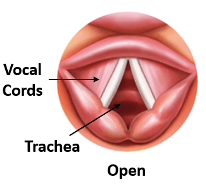
This causes your larynx to drop, releasing built-up tension.
4. Sing “Mum” up and down the scale while exhaling and releasing pressure like you would during a yawn.
5. Put two fingers to your larynx and feel whether it’s moving or staying put.
Keep it yawny, and keep your larynx still, balanced, and relaxed.
As always, here’s a video where I demonstrate the “Mum” sound:
9. Narrow the Vowel
In the next section, rather than doing a vocal sound or exercise, I want to show you an easy way to eliminate tension in your singing.
Here’s what you need to know:
Many singers make the mistake of spreading their vowels too wide when trying to hit high notes.

They might stretch the word “girl” way too far, straining the vowel until it sounds like “gur-el!” or something similar.
To fix this, try narrowing the vowel.
1. Pick a song you like and find words that you’re straining on.
2. Replace the wide vowels with narrower vowels.
For example, I would replace the wide vowel “gur-el” with a simple “gul” sound.
You know, like how an Englishman would say it!
This vowel modification technique is essential for anyone learning how to sing without straining throat tissues, as it prevents the vocal tract from constricting during challenging passages.
It helps to extend your lips a bit while doing this.
3. Try singing the passage again and notice how much easier it becomes.
Obviously, you don’t want to permanently sing in a fake English accent. But it certainly explains why Green Day sounds English!
It’s all to avoid vocal strain!
But once you get used to hitting the note without stretching the vowels, you can switch back to your real voice.
Your vowels will be cleaner, more focused, and less strained.
Check out my demonstration below:
10. Imagine Yourself On Top of the Note
In this last exercise, I want to give you a mental image you can use to sing without straining.
While this last one is more mental than physical, it’s still a super great way to avoid strain and expand vocal range.
We often talk about a high note as something you have “reach”, “stretch”, or “push” for. And it really does feel that way sometimes!
But try, just for a moment, to think differently.
1. Anticipate a high note before you hit it.
2. Imagine that you’ve already raised your voice, that you’re standing right on top of the note.
3. Then, when the moment arrives … just grab it!
Instead of reaching up from a G to grab that high A, picture yourself on top of the A and just sing it without reaching for it.

I know this sounds strange, so if you’re still a little confused please see my video explanation:
Conclusion
If you’re still feeling a bit of strain, don’t worry!
Singing without straining is tricky and takes many hours of vocal exercises to master.
But if you’re a musician, you already know the drill, right?
It’s worth noting that vocal damage from straining isn’t permanent in most cases—does vocal strain go away?
Yes, with proper rest and technique correction, most voices recover well.
Learning how to tell if a singer is straining (the visible neck tension, strained facial expressions, and thin, pushed tone) can help you identify and correct these issues in your own singing.
And a quick note on a singing style that often causes confusion: while we’re focusing on how not to strain, is throat singing real? A
bsolutely—it’s a legitimate technique practiced in Central Asian cultures where singers produce multiple pitches simultaneously, but it requires specialized training completely different from the techniques we’re discussing here
Practice a little bit every day.
Put in the time, the effort, and the commitment, and you’ll be rewarded.
One of the greatest benefits of proper technique is learning how to sing without voice cracking, as cracks typically occur when moving between vocal registers under strain.
With these exercises, you’ll develop the coordination to navigate your entire range smoothly.
Before long you’ll be singing with a full and beautiful vocal range with hardly any strain at all!
Many vocalists wonder why do I feel like I’m straining my voice when I sing?
The answer usually involves one or more of the tension sources we’ve discussed.
With consistent practice of these exercises, you’ll discover how do I stop straining when I sing and develop healthy vocal habits that last a lifetime.
If you’re learning how to sing falsetto without straining, these same principles apply – proper breath support, relaxed throat, and correct vowel placement will help you access those higher registers smoothly.
And if you’re experiencing vocal fatigue, many professionals recommend honey and warm water or herbal tea with ginger as what do singers drink to soothe their throats.
Feel free to check out my Master Your Voice course for more tips and tricks on singing without straining.
Want to Nail Those High Notes?
Every singer wants to expand their range. Expand Your Range Fast will show you how to finally hit high notes in your voice without straining. Expand your range by 5 notes or more!


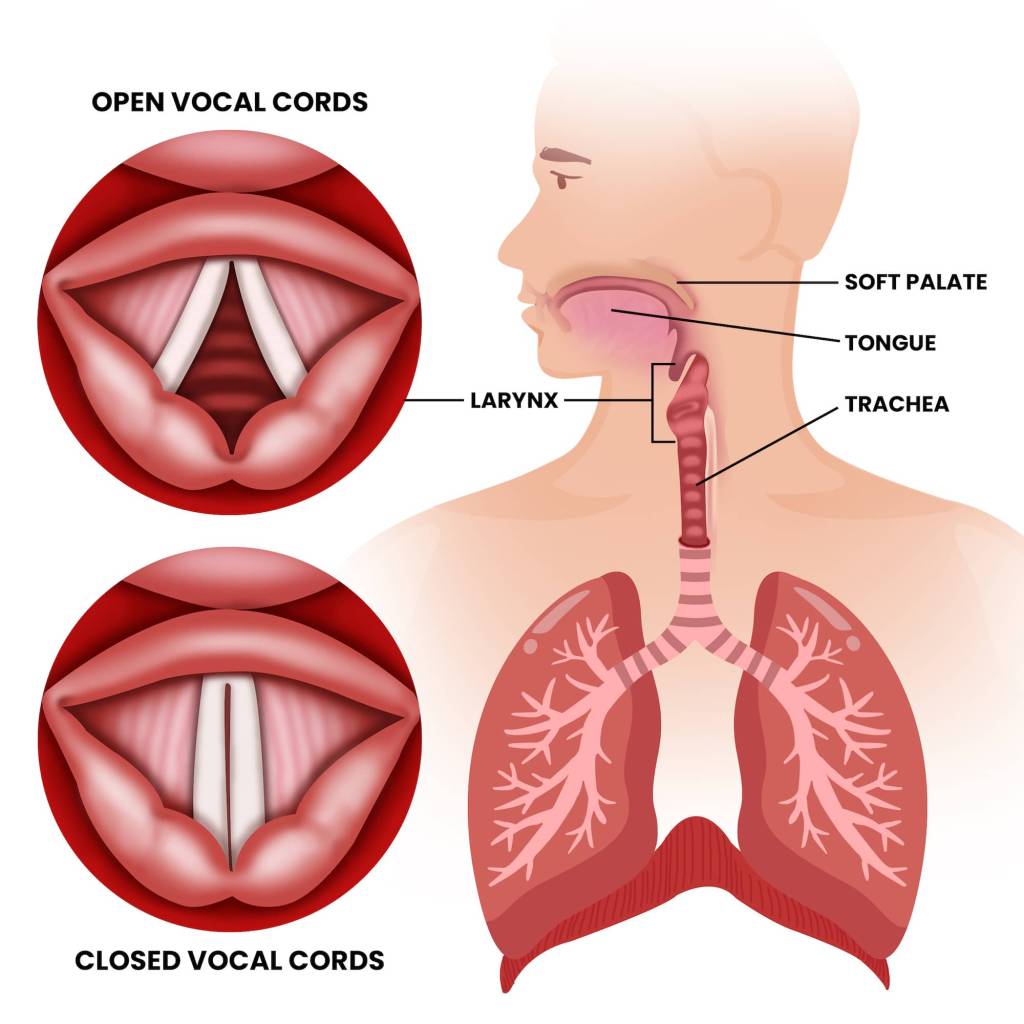
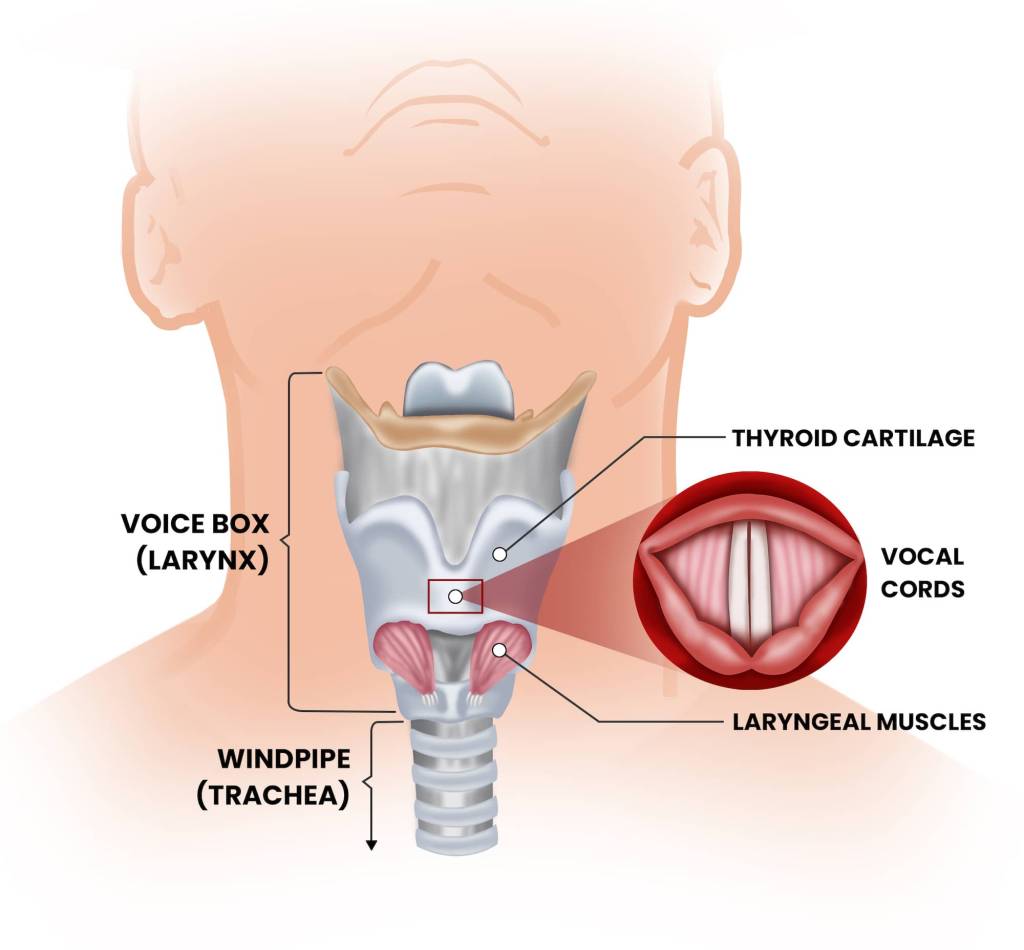

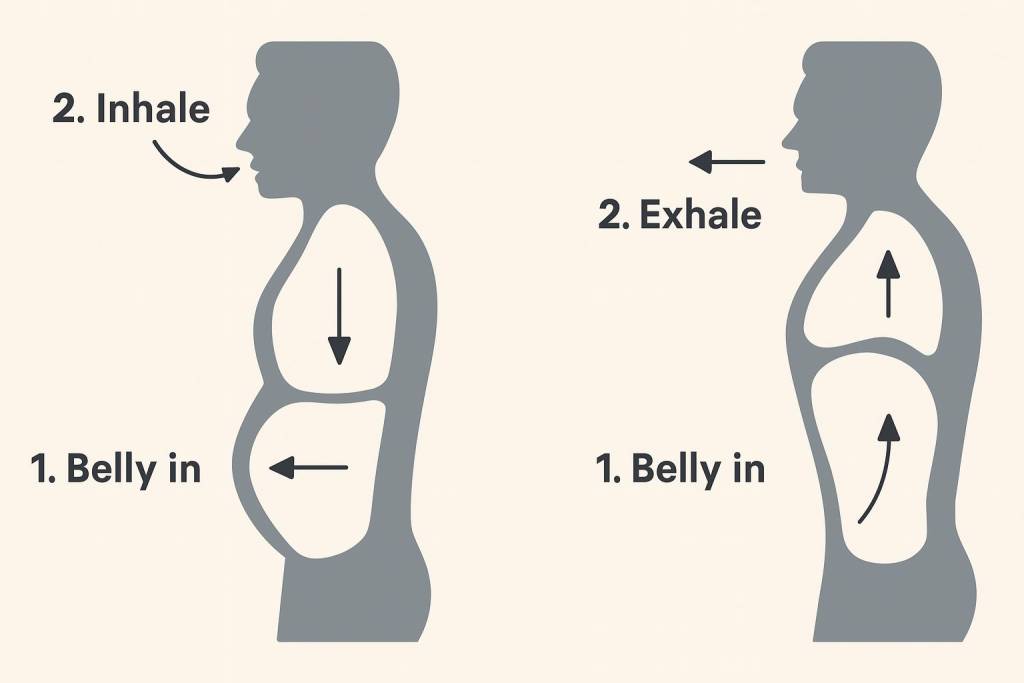




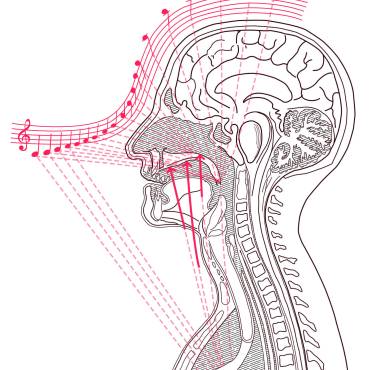
12 Comments
Good
Glad you found it helpful Yerry!
Love this yesterday was practising with the group and we kept going higher and higher to an extent I felt some lightning sort of pain on the right side of my neck and ony thyroid I was fretting alright
Hey Elsie, yes as I mentioned in the article and video, if you feel pain, STOP.
That means that you’re either going to high or doing something wrong.
Just reset, and try to get it better tomorrow.
This article was very interesting and informative. I didn’t realize that vocal strain is the reason you sometimes SIng badly. I didn’t understand some of the stuff in some exercises but it was still a fun article. Thank-you!
Absolutely Mia!
I found this website amazing I have a Song to sing and I was scared but when I found this website I was relieved . But what I do when I try to sing sorry by Justin Bieber and I strained what should I do . Pls this is tomorrow help me .
Way to go Star Lord!
Hello Matt,
I hope you’re alright.
I’m Yanis from France.
My voice goes C1 to G5 (I get some difficulties to have A5,B5 ) but wierdly, I can have whistle on A5 to E6.
But My whistle isn’t really beautiful… It cracks and I have a lot of tension in the throat and neck… I tried massage, relaxation and more but I’m always tensed in this area (same goes for the Larynx…)… Is there a way to get rid of this ? The same applies for the high voice… I’m a Tenor but I know I can’t definitely go higher.
Sincerly
Hey Yanis, it would be difficult to answer without hearing you. Consider booking a trial 30-minute lesson here: https://ramseyvoice.com/book-singing-lessons/
Thank you very useful. Just been told by ent my throat muscles show signs of tension after three years of voice issues. Really hoping these exercises are going to help 🙏
I hope so too Maria!